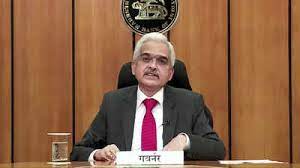Parliament Replaces 90-Year-Old Aircraft Act with Bharatiya Vayuyan Vidheyak 2024: Key Reforms and Implications

Parliament Replaces 90-Year-Old Aircraft Act with Bharatiya Vayuyan Vidheyak 2024: Key Reforms and Implications
In a landmark move to modernize India’s aviation laws, the Parliament has passed the Bharatiya Vayuyan Vidheyak 2024, replacing the Aircraft Act of 1934. This reform comes as a much-needed overhaul for the aviation sector, aligning it with contemporary global standards and addressing the dynamic challenges of the 21st century.
Key Highlights of the Bharatiya Vayuyan Vidheyak 2024
- Enhanced Safety Regulations:
The new legislation incorporates stricter safety protocols for passengers, crew, and ground operations, with provisions to ensure robust adherence to international aviation safety standards. - Focus on Green Aviation:
Recognizing the environmental impact of air travel, the Act includes provisions to promote sustainable aviation fuel and reduce carbon emissions, aligning with India’s commitment to combat climate change. - Modernized Licensing System:
The new law introduces streamlined processes for the issuance of pilot and operator licenses, integrating advanced digital platforms to reduce bureaucratic delays. - Empowerment of Aviation Regulator:
The Directorate General of Civil Aviation (DGCA) will now have enhanced powers to penalize violations and ensure compliance with international civil aviation norms. - Boost to Domestic Aircraft Manufacturing:
To encourage the Make in India initiative, the Act includes provisions for incentivizing the manufacturing of aircraft and related technologies within the country. - Drone Regulations:
In a significant step forward, the Act comprehensively addresses the regulation of unmanned aerial vehicles (UAVs) or drones, covering their operation, safety, and commercial applications. - Strengthened Consumer Protections:
Passengers’ rights, including compensation for delays, cancellations, and overbooking, are better defined under the new Act, ensuring a more consumer-centric approach.
Why the Change Was Necessary
The Aircraft Act of 1934, enacted during the British colonial era, had become outdated and inadequate to address the challenges of modern aviation. The aviation landscape has dramatically evolved with advancements in technology, the rise of low-cost carriers, drone proliferation, and increasing passenger expectations. The Bharatiya Vayuyan Vidheyak 2024 bridges these gaps, providing a forward-looking framework for the industry.
Implications for Stakeholders
- For Airlines:
Airlines are expected to benefit from a simplified regulatory framework, but they will also face stricter compliance requirements. - For Passengers:
Enhanced consumer protection measures are likely to improve passenger experiences and increase accountability among service providers. - For Drone Operators:
The Act opens new avenues for drone startups and operators by providing a clearer legal structure, fostering innovation in sectors like logistics, agriculture, and surveillance. - For the Economy:
The focus on domestic manufacturing and sustainable practices is expected to boost job creation and attract foreign investment in India’s aviation sector.
Reactions to the Reform
Industry experts have lauded the move as a progressive step toward making India a global aviation hub. Civil Aviation Minister expressed confidence that the new Act will “revolutionize India’s aviation sector, ensuring safety, sustainability, and growth.”
However, some concerns have been raised about the effective implementation of these ambitious provisions. Stakeholders have urged the government to ensure proper execution through adequate funding and capacity building.
Conclusion
The passage of the Bharatiya Vayuyan Vidheyak 2024 marks a historic milestone for India’s aviation industry. By addressing modern challenges and opportunities, it sets the stage for a safer, more efficient, and environmentally conscious aviation ecosystem. As India’s skies prepare for this new era, the world will be watching closely to see how these reforms take flight.




